Unlocking Hundreds of Billions Annually for Nature—at No Cost
10 February 2025 8:42pm
18 February 2025 7:21am
Hi Damian, maybe I'm thick or something, but I still have no idea what you are offering. There are a lot of big numbers thrown around but I'm sure you are able to explain much more clearly what it is you are offering. Can you not just explain in really simple language what you do, where you get your cut from, what you sell, what someone has to do to get it and how it will benefit wildlife funding ? To me it feels like there's is some bad side to this that you are not wanting to talk about. My reaction to that is to run in the opposite direction. What works for me is transparency, I'm not seeing that here. And a tip, if you make something seem vague and untransparent then you tend to loose people forever and rightly so I think.
Also you say you have been nominated for the 2025 Earthshot Prize (you have not won a prize), can you please provide a link to some site that is not your own that proves this ?
And todate, how much money has been giving to biodiversity causes through whatever this is and to whom ? A search shows a figure of 17,926 euros of donations from your workers to some charitys. But no evidence of any billions or even hundreds of thousands that I can find.
Here's an approach that I'm sure would work here. Donate a million euros and ask for grant applications for it. Keep it simple and transparent. You don't have to think in terms of billions, even a single one million would work wonders. Above all it would establish credibility. You would get a lot of praise and support if you did that from this crowd I think. What do you think? Keep it short term. Say applications close end of August or something.
18 February 2025 5:28pm
Hi Kim,
Thank you so much for taking the time to share your thoughts.
I understand your desire for concrete evidence, and that's precisely what we're working towards. Please remember that Mandatum is a nascent startup. We successfully completed a private beta and passed the Proof of Concept stage, demonstrating the viability of our core technology. Our focus at this stage is to refine our model and build strategic partnerships to navigate the nature conservation landscape.
The Earthshot Prize nomination serves as validation of our innovative approach and its potential for significant impact, as we have successfully progressed through several stages of the rigorous evaluation process.
Mandatum has the potential to unlock hundreds of billions of dollars annually for nature conservation, aligning perfectly with the goals of this Funding and Finance Group. I am hoping to get some guidance and support from this community to accelerate our development and bring this groundbreaking solution to fruition to resolve "the number one problem in nature conservation."
I am eager to connect with individuals genuinely interested in exploring innovative solutions to the funding crisis in nature conservation. If you'd like to learn more about Mandatum and discuss the project in more detail, please DM me. I believe your expertise, or that of any member of the group, would be invaluable in guiding our project towards success.
Cheers!!!
A call for support
14 February 2025 12:34pm
14 February 2025 6:46pm
Hi, Leticia - Have a look on Planet Women and Awesome Foundation, they might offer something. I'd also try to contact the folks from Onçafari and Pousada Caiman and ask for their sponsorship. Good luck!
18 February 2025 11:30am
Thank you so much!!! I will contact them.
Explore the PANGEA Project with Elsa Ordway
17 February 2025 11:45pm
Bats detectors
17 February 2025 9:04pm
Catch Up With The Variety Hour: February 2025
14 February 2025 9:06pm
15 February 2025 12:19am
Mothbox Updates: Field expedition highlights - we deployed 19 Mothboxes in one go!
14 February 2025 7:48pm
External GPS trackers for large snakes
21 January 2025 3:55am
24 January 2025 3:18pm
Hi @RuSomaweera I haven't tracked snakes and would be interested to hear about any appropriate approaches too! I found this paper you might've already seen by Christensen et al. (2024) discussing attachment methods for snakes more generally (from my quick scan, I don't think it covers species such as anacondas in great detail though). Only one study that used an external GPS system met the reviwers inclusion criteria (by Gerke et al. 2021), which appeared to involved duct tape and super glue and this device from Ecotone. There's a picture on page 547 of the article. It looks as if the tracking times averaged 19 days and ranged from 10-28 days. Perhaps a more flexible and water-ready variant of this might be something like a neoprene 'sleeve' that can be fitted around the body of the snake with the GPS device attached to the sleeve? And perhaps some sort of medical-grade silicone adhesive would be better able to stick to the snakes skin? I am not sure if it would be appropriate or not, but I found this article discussing a type of medical silicone called 'BioAdheSil'. Perhaps you could discuss it with the authors? Anyway, looking forward to other responses and information you gather!
Cheers,
Rob
13 February 2025 10:40pm
Not with GPS; however, we could set up a node grid where you can localize their movement within the grid space. I don't know how much a snake moves though, so that would have to be taken into account of course.
CTT Node™ Version 3.0 with dual frequencies (note: power source sold s – Cellular Tracking Technologies
The new CTT Node 3.0 is the next evolution in radio telemetry, while providing consistency for those already using nodes in their research. You spoke, and we listened. While previous nodes worked incredibly well in areas where full sun was plentiful, having the solar panel directly atop the case has its limitations
MargoTV - new wildlife tech youtube series and subsidized conservation products!
9 January 2025 12:17am
12 February 2025 7:28pm
That’s great! Definitely interested!
Think in terms of 10W continuously.
13 February 2025 7:43am
I'm looking forward to the cool Margo TV we are going to see when we get some AI bear monitoring going in Canada with Margo supplies :) That's going to be awesome.
Here is an image of a bear from last night in the Scandinavian zoo in Denmark. The system triggered on the bear even though it is very dark and this is a digital zoom on a wide angle fixed camera. Despite being very fuzzy we are able to get triggers on these ones due to the use of multiple mitigation techniques so we get long distance, high sensitivity and low false positives. This one for example was checked with multiple successive frames and multiple AI models before calling it a bear.
This is without thermal. But with added thermal and models trained on thermal images the heat signature will effectively be taken up in the model I'm expecting. This would mean that in effect you can tolerate a lower confidence level but it would after all be a living thing as well.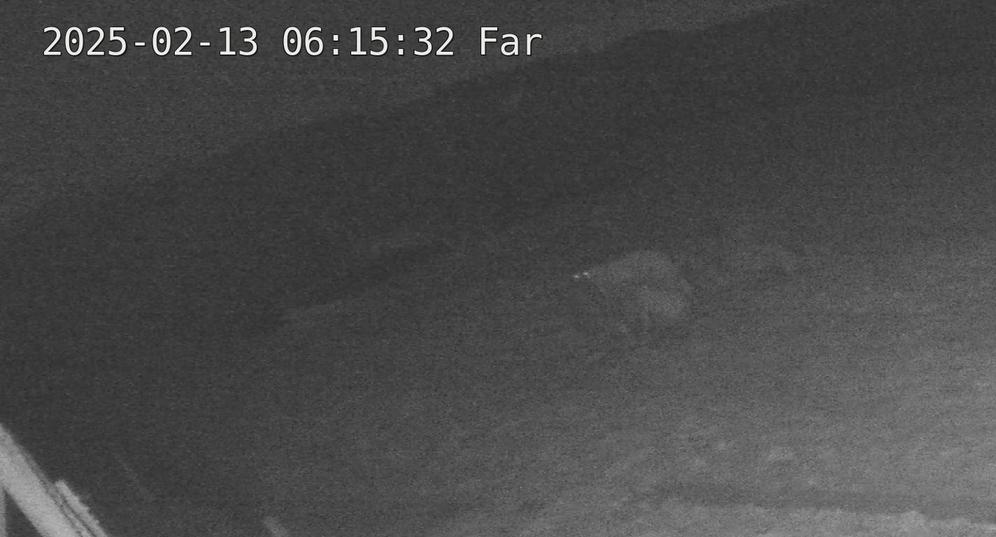
This trigger event for this event was even less clear, but you can still just make out two eyes, and bear in mind (excuse the pun), the actual view from this camera is even wider and the bear further away in a sense as this is a dynamic zoom.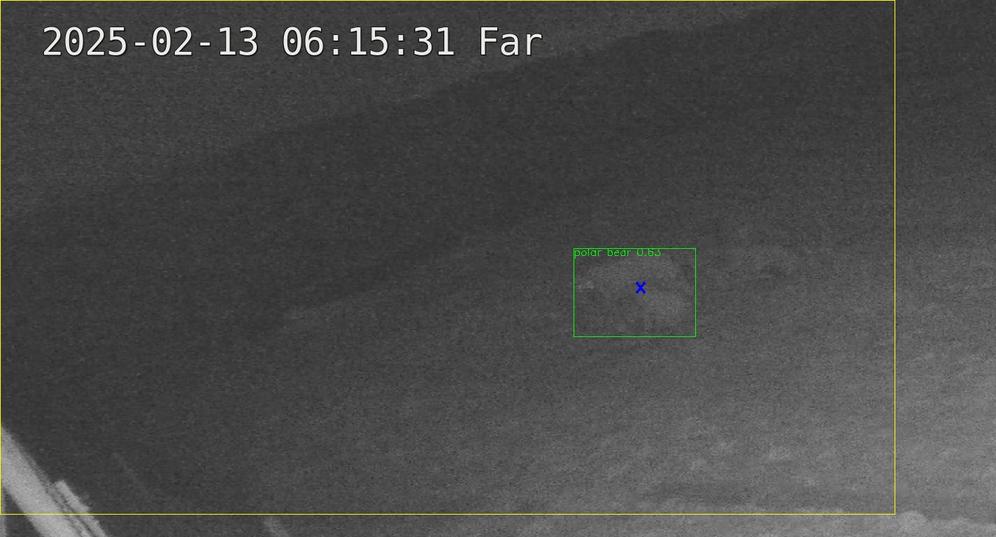
13 February 2025 7:49pm
Love it! I have a few ideas.
GhostNetZero.ai
13 February 2025 5:40pm
The Variety Hour: 2025 Lineup
13 February 2025 5:23pm
Bass/vibration measurements
29 January 2025 4:34am
13 February 2025 12:17pm
@Thomas, @ Harold, thanks a lot for your feedback. Clearly there appears to be no cutting back in costing if quality is to be expected. I was hoping for cheaper solutions, but to record at a professional quality level looks like we have to go in for the more expensive options. Thanks again, best regads, Nik.
13 February 2025 12:19pm
The point was to record vibrations, not air noise, thanks for explaining the technical issues with the HOBO unit we were thinking of, clearly a few minutes of data would not help.
13 February 2025 3:34pm
You can hack a 6-inch underwater speaker onto a recording unit, and swap it from being speaker to a microphone. They are, on paper, the same thing. That frequency range doesn't work will with small piezo surface (itty microphones). If you want to get fancy, you can add the resistors and capacitors to make a band-pass filter, so you don't pick up quite as much thunder and passing vehicles.
This is a fairly standard audio problem that a good audio engineer can assist with.
I've detected low frequency bird wingbeats with some low-power analog wizardry in the past. But you will need dedicated audio engineering time.
Welcome to the Conservation Tech Training and Education Group!
31 October 2022 9:15pm
24 February 2023 2:24pm
Hi Folks,
I'm Liz Ferguson from Ocean Science Analytics and just noticing this thread so reaching out to express interest! Thanks for posting that overview Stephanie.
My company is an ocean science research consulting and online technical training company. We provide hands-on training for software, thus far related to passive acoustic monitoring and R, but have a Marine spatial analysis course coming out using QGIS in 2023. I also teach at a local college, and some analytical courses. Really interested in the group so happy you started it Suz and Andrew!
2 March 2023 2:03pm
Thank you liz! @sstathat and I are really excited about the group as well. I can imagine there are a lot of challenges with training folks to use the software. Are these software/trainings. open source and/or available online?
13 February 2025 3:13pm
Hi! I'm Connie, I'm in biomedical and have spent the past few years in Texas, working between Academia and private sector/NGO. I've been coordinating open source technology development between multiple institutions, and private sector, where I create technology and apply it in the field under for profit and non-profit labels. Generally my day is up at 6am, do tech until lunch, see friends and family for lunch, do applied bird work and training, have dinner, do tech, see friends and family in the PM, with field work trips in between.
My part-time project work under USDA Conservation Innovation Grants ends in March, freeing me up 20 hours a week to pursue pure tech development and publishing, and I'll actually have time to say hi to people again!
My biggest interest is bringing in and creating interdisciplinary early career conservationists and training self-made conservationists who have created their careers in areas with few resources and support. Sometimes, one just needs a few critical skills to get their projects off the ground. I mentor research students as well as applied conservation learning using 2,000 captive birds at a propagation aviary outside of Austin, TX, where I'm the Institutional Officer overseeing research for the IACUC.
If you need to practice collaring some birds before you do it in the middle of nowhere and spend the travel money, let me know! My bird research phone number is US and easy to remember 42 42 MAGPIE. (That's the meaning of life twice, and a magpie.)
I've hosted trainees from the Field Museum, Natura Mexicana, a load of universities in US, Europe, and South America... you do birds, you do tech, let's be buddies!!!
Tutorial: Synchronizing Video Resources with Accelerometer Data
10 February 2025 12:06pm
13 February 2025 2:08pm
Short update: the latest version 13.0.9 of Firetail is now available from https://www.firetail.de
Looking for marine biologists - Bioacoustic data processing made easier!
27 October 2021 6:55pm
5 December 2021 4:58pm
Hi @cosmicspittle !
Thank you for your interest to our technology! I sent you a private message to continue the discussion.
12 February 2025 11:25pm
Hi! Did you find all the collaborators you needed?
I'd be curious to hear what sort of fruits were harvested from your collective bioacoustic efforts!
Scott in Seattle
13 February 2025 7:52am
Hey Scott,
I'll answer that since Evelina left us.
Since 2021, we've been on a few expeditions collecting our own data, collaborated with organisations worldwide, and won competitions regarding marine life conservation.
We use our models to detect and classify noises from 10 different species, from the Burrunan Dolphin in Australia to the North Atlantic Right Whale (a collaboration with NOAA).
I would be happy to discuss a possible collaboration and do a deep dive (pun intended) into what we do today!
Extracting camera name or serial number
10 February 2025 10:35pm
11 February 2025 10:07pm
Thanks -- I will send you a message
12 February 2025 4:29am
It sounds like you've exhausted everything exiftool can do, in which case, YMMV, but I have a module that uses a combination of OpenCV and PyTesseract to pull metadata from the actual pixels:
https://github.com/agentmorris/MegaDetector/blob/main/megadetector/data_management/ocr_tools.py
Documentation for this module is here:
https://megadetector.readthedocs.io/en/latest/data_management.html#module-megadetector.data_management.ocr_tools
I have only really used this to extract time and date; my goal was to make it as robust as possible for time and date over a wide variety of manufacturers, rather than to find a wide variety of text. But I expect it would be relatively straightforward to tune for a single bit of metadata and a single manufacturer. I'm not sure whether it's worth literally using this module vs. just looking at the code and using that as a starting point, or using the similar R example you linked to, but FWIW, if you try it out and get stuck, send me a few images by email and I'll see if I can tune it a bit to get what you need.
Good luck!
-Dan
12 February 2025 6:20pm
Applications are open for the Sustainability Leadership Recognition in Robotics!
12 February 2025 4:50pm
AddaxAI - Free AI models for camera traps photos identification
3 April 2024 7:16am
12 February 2025 2:44pm
Yes! The plan is definitely there :) But also there are some other models I want to add. It's just a matter of finding enough time to do the work ;)
12 February 2025 2:47pm
Hi Caroline @Karuu ,
The model is still in development. Unfortunately, I'm not sure how long it will take as it is not my top priority at the moment. However, you can still use EcoAssist to filter out the empty images, which is generally already a huge help.
Would that work for the time being?
12 February 2025 2:55pm
Hi Lucie @luciegallegos ,
Great to see ecoSecrets and happy to collaborate in any way I can! All EcoAssist's models are open-source, and the inference code too. With regards to planning a meeting, would you mind reaching out to me on email? Then we can plan a video call to discuss this further :)
Camera Trap Data Visualization Open Question
4 February 2025 3:00pm
12 February 2025 12:31pm
Hey Ed!
Great to see you here and thanks a lot for your thorough answer.
We will be checking out Trapper for sure - cc @Jeremy_ ! A standardized data exchange format like Camtrap DP makes a lot of sense and we have it in mind to build the first prototypes.
Our main requirements are the following:
- Integrate with the camtrap ecosystem (via standardized data formats)
- Make it easy to run for non technical users (most likely an Electron application that can work cross OSes).
- Make it useful to explore camtrap data and generate reports
In the first prototyping stage, it is useful for us to keep it lean while keeping in mind the interface (data exchange format) so that we can move fast.
Regards,
Arthur
12 February 2025 1:36pm
Quick question on this topic to take advantage of those that know a lot about it already. So once you have extracted all your camera data and are going through the AI object detection phase which identifies the animal types. What file formation that contains all of the time + location + labels in the photos data do the most people consider the most useful ? I'm imagining that it's some format that is used by the most expressive visualization software around I suppose. Is this correct ?
A quick look at the trapper format suggested to me that it's meta data from the camera traps and thus perform the AI matching phase. But it was a quick look, maybe it's something else ? Is the trapper format also for holding the labelled results ? (I might actually the asking the same question as the person that started this thread but in different words).
12 February 2025 2:04pm
Another question. Right now pretty much all camera traps trigger on either PIR sensors or small AI models. Small AI models would tend to have a limitation that they would only accurately detect animal types and recognise them at close distances where the animal is very large and I have question marks as to whether small models even in these circumstances are not going to make a lot of classification errors (I expect that they do and they are simply sorted out back at the office so to speak). PIR sensors would typically only see animals within say 6m - 10m distance. Maybe an elephant could be detected a bit further. Small animals only even closer.
But what about when camera traps can reliably see and recognise objects across a whole field, perhaps hundreds of meters?
Then in principle you don't have to deploy as many traps for a start. But I would expect you would need a different approach to how you want to report this and then visualize it as the co-ordinates of the trap itself is not going to give you much information. We would be in a situation to potentially have much more accurate and rich biodiversity information.
Maybe it's even possible to determine to a greater degree of accuracy where several different animals from the same camera trap image are spatially located, by knowing the 3D layout of what the camera can see and the location and size of the animal.
I expect that current camera trap data formats may fall short of being able to express that information in a sufficiently useful way, considering the in principle more information available and it could be multiple co-ordinates per species for each image that needs to be registered.
I'm likely going to be confronted with this soon as the systems I build use state of the art large number of parameter models that can see species types over much greater distances. I showed in a recent discussion here, detection of a polar bear at a distance between 130-150m.
Right now I would say it's an unknown as to how much more information about species we will be able to gather with this approach as the images were not being triggered in this manner till now. Maybe it's far greater than we would expect ? We have no idea right now.
WILDLABS Awards 2025: Ask your questions!
22 November 2024 5:04pm
10 February 2025 10:51am
Hello Raphael,
Thanks for your question.
We expect any staff time/salaries that are linked to the project to be added in the "Staff time" section of the budget.
Best,
12 February 2025 10:02am
Hi Adrien, should the letters of support be written by team members or by external supporters (researchers from other institutions, local organization managers, etc.)?
12 February 2025 10:18am
Hi Diego,
Thanks for your question.
Letters of support are expected to be written by external supporters. Please do note that they are not mandatory.
Best,
Using LoRa for a sensor network: recommendations
5 February 2025 6:06pm
11 February 2025 12:22pm
@pchwalek Thank you for the response! The project which I am currently developing is exactly as you mentioned in the LoRa use case: a parent unit in the centre of a conservation area which is to recieve one way packets from child sensor units spread around the perimeter of the protected area. The difference in LoRa vs LoRaWAN is much more clear to me now, and I'll try me path with LoRa based on the feedback :)).
If you happen to have resources to recommend in terms of developing and using LoRa, I'd be glad to have your recommended references as a starting point.
Best regards,
Kristián
11 February 2025 11:59pm
@kristian.cuervo happy to help. Make sure to take note of @Eric24's comment about potential packet losses. Having LoRaWAN could make that problem a bit nicer, although I don't have enough experience with error detection via LoRaWAN, but you can also just retransmit packets manually via LoRa or if you have the power and bandwidth budget, just retransmit redundant packeted.
As for resources, I would just Google it but starting with one of the LoRa boards from SparkFun/Adafruit or equivalent is recommended.
12 February 2025 8:53am
@Eric24 The use case is as I wrote to Patrick: "a parent unit in the centre of a conservation area which is to recieve one way packets from child sensor units spread around the perimeter of the protected area.". The packets are simple pings on whether the sensor wants to send an alarm to the rangers in the conservation area and a percentage accuracy that e.g a poacher is detected on the perimeter.
The delivery guarantee requirement is thus very high, but it is not necessary to send signals often if an event is not occuring (which should not be more frequent than once a day at max). Perhaps the delivery guarantee could be fixed by simply sending an alarm signal many times? Furthermore, it is not foreseen that the sensors need to be dynamically reconfigured.
Thank you for the response and insight in your development process! I'm planning to use very similar modules as you described.
List of bioacoustics software
1 July 2020 3:23pm
12 February 2025 4:23am
Hi! There are several nice tools available that have some, but perhaps not all, of the features you're looking for. Most of these are linked to on the current version of the bioacoustics software database here - https://rhine3.github.io/bioacoustics-software/
- PAMGuard is a classic that's more geared towards underwater monitoring. It has plug-ins to do just about anything you can imagine. Unfortunately I'm not aware of any "terrestial" equivalent
- Probably the closest to what you're asking for can be found on cloud-based applications - in particular, WildTrax (which I have used) and Arbimon (which I haven't used)
- There are some applications you can run on your own computer/server - one example is SoundScapeExplorer. The BirdNET GUI also keeps getting better and better
I also want to mention WhomBat as well, which is a nice and very carefully thought-out open-source audio annotation platform.
12 February 2025 4:25am
Hey! Yeah, that looks fantastic, thanks for this contribution. I will add it to the database. Could you please fill out this form to give me some more detailed information about it?
12 February 2025 4:27am
Hey Catherine! This post originally linked to an old version of the database - the new version does include WildTrax. I'm a big fan of it :)
Tracking tapir and giant armadillos
7 January 2025 12:11pm
12 February 2025 12:19am
We aim to monitor beyond the 6-hectare site, especifically right now we are assessing where salt licks and natural water sources are nearby so we can understand what's the full area we should be surveying to have a better understand of animal movement!
12 February 2025 12:21am
This is beyond fantastic, thank you so much for sharing! Will reach out!
12 February 2025 12:21am
Thanks so much!!
Applying Open-source Computer Vision Models to Camera Trap Images
22 February 2025 6:19am
24 February 2025 4:28pm
1 July 2025 10:36pm
Climate changes in wildlife protected areas
14 August 2024 11:26am
14 August 2024 5:27pm
Hi Norah!
This is a great concern! Kudos!
Climate change data especially for such a long time can help us answer a lot of questions including the few listed below:
- How has the climate variability affected the trend of species in the ecosystem? (You can choose to study a specific specie of animal or plant) and respond on their increase and (or) extinction.
- How has climate variability affected or supported the survival rate of introduced species?
- Climate variability is one among many factors of invasion, how is the invasion rate in your ecosystem?
- You can also answer on the general topic of your ecosystem’s health with the data!
I would love to read a paper from the data you have! Very resourceful!
Break the leg!
14 August 2024 8:15pm
Great minds think alike. In awe that some of our questions synchronized🤭...thanks so much tina♥️
11 February 2025 5:17pm
I agree Adventina. I am also interested in "How has the climate variability affected the trend of BAT species in the ecosystem? and respond on their increase and (or) extinction.
@Norah, I am also interested in the findings regardless of the species you pick. In 2022 - 2023 we created a climate database for an NGO project in Amhara, Ethiopia. It would be cool to come up with a climate variability databasa for the park.
Corrodible Burn Pin Mechanism: How Does It Work?
21 January 2025 2:54am
30 January 2025 8:51pm
Ok so I'll add my 2-cents here but only really in relation to the 'corrosion in seawater' part of the discussion.
When I am releasing packages, sensors or moorings sub-surface I'm using (as has been previously mentioned) more expensive burned wire units that can be programmed for particular durations and then burn a wire to release or you come along and actively talk to the burn wire unit with a hydrophone/transmitter unit and sent it a burn signal when you are close by.
One other option I found is to have galvanic links made up. These are small cylinders of alloy that are made up to corrode and degrade over time using a special recipe and a calculation based on your depth, water temp and salinity. You can get a bag of 50 of these links for not a high cost but they may only last for 2 weeks and the corrosion/release accuracy could be in the region of 4-12hrs I believe. Still its perhaps an option for things that are more static and not moving around into differing temp/depth zones.
The galvanic links I have been using are found at:
Galvanic Timed Releases - International Fishing Devices
For over 40 years, International Fishing Devices, Inc. has been the designer and manufacturer of Galvanic Timed Releases.
31 January 2025 9:06pm
Are the burn wire units you're using an off the shelf component?
If so I'd be interested to have a look.
11 February 2025 12:55pm
Some thoughts as I have experience working with some of the tech mentioned...
Corrodible pin
@htarold Did a great job explaining how that works. This pin is used in the pop-up satellite tags from Wildlife Computers, Microwave Telemetry, and Lotek Wireless. Biologging Solutions in Japan is also making a PSAT (I assume they also use a corrodible pin) and Star Oddi is also trying to develop the same. In short, nearly everyone uses the corrodible pin.
Burn wire release
There is a patented design (Desert Star Systems) that uses burn wire (I forget the type of wire), and if my memory is correct, it can work in any environment (perhaps I'm wrong, but I'm pretty sure it works in air, too). You can Google that company to get more information, and they used to have some YouTube videos showing their burn wire design.
Propellant-based release
I wanted to say 'explosive' release, but that's being a little dramatic. There is a pop-up satellite tag manufactured by Desert Star Systems that uses an explosive-based system (there, explosive, I said it). Instead of a pin, their nosecone has a chamber that you load gunpowder into, and upon release the gunpowder is ignited, causes combustion, the chamber cannot support the expansion, and the nosecone is released from the tag through force. It works in any possible environment.
Galvanic timed release (GTR)
In my opinion, the biggest problem with GTR is that the timing is variable. It is heavily reliant on the water quality, and I have heard anecdotally that it is near impossible to truly know when the device will release.
Unknown release
I know that Wildlife Computers was awarded some funds from the Office of Naval Research to develop a release package for recovering instrumentation from marine mammals when they haul out (think elephant seal). I believe this package is independent of a tag so you can use it as a carrier for other instrumentation. I don't know whatever came of this project, but it's Google-able. (Update: it's called the PRD-RP, and if you Google that you'll find it easily enough.)
Disclaimer: I used to work at Desert Star Systems, and consequently I know their releases well. Nothing I shared here is proprietary or a trade secrets.
Nature Tech intern
Tropical fieldwork funding! Up to $15,000 -Susan Wojcicki Fellowship
10 February 2025 7:01pm
eDNA sampling kits
10 February 2025 3:05pm
Best tech solutions and their partnerships vs. wildlife crime
18 July 2016 8:03pm
26 July 2016 8:52pm
Hi Rachel, the intended audience is individuals and organizations working on tech/innovative solutions to protect wildlife, although the principles of partnership building in the brief will apply more broadly. Publication is TBD but I will surely share the results here to keep the conversation going.
Marie
7 February 2025 4:48pm
Hi, likely already a bit late to make impact, but here's what we have seen work very well:
- UAV's equipped with thermal vision
- Fence alarms
- 'Scarecrows' mimicking ranger activities with a pivoting flashlight (very effective and cheap)
We are a NGO developing those cheap, but efficient methods and partnering with a game reserve. Currently looking into scale up to make the tech available to other reserves.
I haven't been involved as a founder, but a partnership with the reserve was always required.
The goals a shortly put as, preventing wildlife crime BEFORE it happens. So mostly any kind of poaching. Now as we are growing, looking also into monitoring tasks such as wildlife count/VHF tracking etc.
10 February 2025 2:46pm
You can also check out WWF's newly launched C2C: Conflict to Coexistence approach. It provides a framework and methodology for developing tailor-made human-wildlife conflict (HWC) management strategy based on the local cultural, environmental and social context.
The power of bioinformatics and next-generation sequencing (NGS) in conservation biology.
10 February 2025 1:40pm





















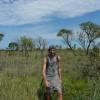






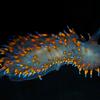




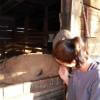


17 February 2025 5:00pm
Hi Jared,
Thank you so much for your feedback! I appreciate you taking the time to share your thoughts. My message needs refining so please let me try to elaborate for the group, and feel free to DM me if you want to discuss it further:
The challenge:
Philanthropic giving in the USA accounts for $500 billion/annually, 70% comes from everyday people, and only $3 billion goes to Nature Funding The main barriers to giving for Americans are affordability (72%), transparency (65%), and ease of contribution (35%). Thus, B Corp works on transparency, and 1% for the Planet makes it easy for people and merchants. These solutions help but are half measures as philanthropy remains directly correlated to GDP with low single-digit growth despite 90% of Americans wanting to help the Planet.
Mandatum solves the affordability issue for everyday people and merchants to contribute at no extra cost to themselves providing hundreds of billions of new funding annually.
We are in the early stages of development, building a strong foundation based on our initial Proof of Concept, and eager to learn and iterate based on expert feedback. We are open to exploring various models, such as nonprofit/for-profit/free/% fee, with the ultimate goal of maximizing our impact and accelerating the flow of funds toward critical causes.
I hope this group helps me to connect faster to the existing network of actors within the nature conservation community. Your expertise and insights will be invaluable in identifying key partnerships and exploring potential collaborations in the nature conservation landscape.
We are open to questions and discussions.
Thanks again.
Cheers!!!